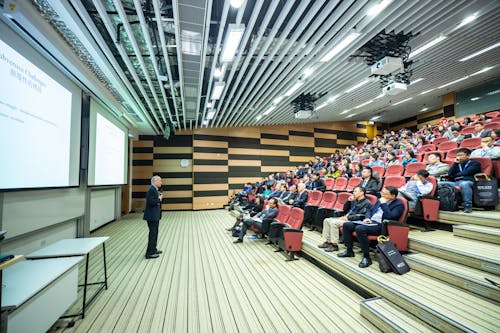When I was in college, it seems to be boring to memorize theories and what else about Human Resource and Development Management or HRDM. It feels like this information is not useful enough when I’m working.

I spent time reading books and lessons from professors but no one able to provide accurate information.
Then I wondered how can I get hired and work in the field if I don’t have an idea?

So while I’m still studying, I worked as a student assistant at my university and was assigned to the Human Resource Department Office. Here is where I finally found the answer to my question, what exactly is the role of the human resources department in an organization.

Isn’t it clear to you too? Whether you are an HRDM undergraduate, nor just inexperienced in the field, in this article, I will explain to you what exactly you will do within the Human Resource Department.
What are the roles of the Human Resource Department?
1. Strategic Management
Let’s start the discussion on strategic management, an issue that most of us forgot to notice.

Here, we will think of an employee-centered concept, as they should consider as the most valuable asset of an organization.
There should be a clear plan focused on valuing employees, and one of these is benefits and compensation.

According to the study of Dr. Ali Tatar, the success of an organization depends on the level of employees’ organizational commitments or measures of an employee’s performance. And it is controlled by the level of work satisfaction.
“The high level of job satisfaction will increase the level of organizational commitment among all employees, and will increase the organization ability in keeping their upstanding employees.” [1]
Factors to increase an employee’s level of work satisfaction
Based on the study, to increase the level of work satisfaction of an employee, the focus should be on improving the following factors;
- Wages system – There should be a proper and standard wages system that will benefit the employer and employee party.
- Rewards System – Develop a reward system in which the employee will be rewarded (monetary or not) in recognition of his or her contribution to the organization. These include promotions, certificates of recognition, bonuses, additional paid vacation leave, and much more. If the employer is not able to give anything, simple praises for every “good job” he has done can also make your employee happy and increase his morale.
- Social Relationship – Isn’t it easy to get in and feel comfortable if your employer and co-workers are approachable at all times? This way we can avoid problems, especially the departure of employees to focus on the organization’s target.
- Work Environment – Let’s not make it difficult for employees to do their jobs. Let us provide for their needs to make their tasks easier and more efficient.
- Fair Company Policy – Company policy is the law of the employer to guide employees in what they must do inside and outside the organization. The cruel policy is not good for workers. It must be fair to both parties (employer and employee) and guidance under the law.
2. Recruitment
Now that we have developed the plan and system, let’s start hiring people for our organization.

What are the Basic Steps of the Hiring Process
- Assessment – Find out what the organization needs so we know what job vacancies are.
- Recruitment Plan – Here you will create a job description for each vacant position and the plan on how to do the job posting, screening, actual interview, examination, and its interviewers.
- Advertising – Announce vacant positions. Choose appropriate media such as job portal sites, company websites, social media, newspapers, and magazines, and much more.
- Application Process – In the collected job applications, select the qualified candidates to be invited for the actual job interview.
- Candidate Selection – Select the candidate with the best credibility to perform the vacancy positions. Invite them to an actual job interview.
- Orientation – Often, this is the first day of the new employee. But before he is brought to its designation, he must first know the policies of the organization. Explain to him clearly the company policy and give sceneries of it. If the employee needs more intense knowledge especially if his job is dangerous in nature, take him to the designated professional training personnel or agency.
- Onboarding – After orientation and training, take the employee to its department to introduce them to the staff as well as its immediate superior.
3. Records Management

From the time applicants apply, the human resource department collects their personal information and keeps it organized in a private place so that it cannot be accessed by unauthorized persons. No one in the company holds the personal data of all employees other than the human resource department.
4. Health and Safety

In small companies, especially in remote and risky work environments, the human resource officer is responsible for the health and safety of employees.
5. Training and Development

Every day, technology improves, new techniques and knowledge are discovered. New businesses are emerging that’s why competition is a crucial factor to focus on if you want to survive in the industry. So it is important that the most valuable asset of your company, your workforce, is trained with the updated technology, and modern techniques to further improve its productivity.
6. Benefits Administration

In the Philippines, as well as in other countries, benefits are mandated by law that protects the rights of workers.
As Dr. Ali Tatar said in his study, the high level of work satisfaction of employees results in a high commitment to the work and organization to which it belongs.
Here are the types of Employee Benefits in the Philippines
- Minimum Wages – The employer must pay an amount not lower than the minimum wage rate set by the government.
- Overtime Pay – Work should be only eight (8) hours per day with a 1-hour break. Any extra labor time, even a few minutes should be paid for premium pay. This is Rate per hour + 25%.
- Night Shift Differential – Workers who work between 10:00 pm and 6:00 AM should receive an additional 10% compared to the minimum wage rate.
- Rest Day – Each employee must be given at least 1 day or full 24 hours of rest after 6 consecutive days. The employee required to be on his/her duty during the rest day must receive premium pay. This is the daily wage rate + 30% compensation.
- Holiday Pay – There are three types of holiday in the Philippines; these are Regular Holiday, Special Non-Working Holiday, and Double Holiday. The employee must receive from 130% to 200% of his daily rate if he is required to work on a holiday, depending on its type.
- 13th Month Pay – Private sectors must give their rank-and-file employees an annual 13th-month pay before December 24.
- Government Mandatory Contribution – Each employee must pay their monthly contribution to the Social Security System (SSS), Home Development Mutual Fund (HDMF or better known as Pag-IBIG Fund), and Philippine Health Insurance Corporation (PhilHealth).
More on Human Resource Knowledge?
If you want to expand your knowledge about this industry, just subscribe to our weekly newsletter notification to receive updates on new articles.

If you have any questions, just leave a comment below.
Sources:
- [1] Impact of Job Satisfaction on Organizational Commitment, Page 75, by Dr. Ali Tatar, Akdeniz University, sa Antalya, Turkey. February 2020.